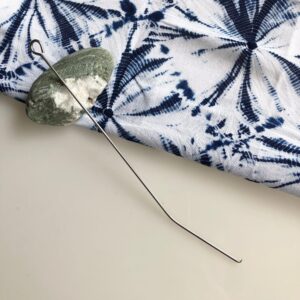About Arimatsu 有松Shibori Tie-Dyeing
The history of Arimatsu, a town known as the center of shibori or tie-dyeing, dates back to 1608, when Takeda Shokuro and other pioneers of shibori started the business. That was several years after Shogun Tokugawa Ieyasu took the reins of government in Edo.
The 400-year-success of Arimatsu Shibori began when the lord of Owari decided to protect the industry as the region’s special product and gave credit to Takeda Shokuro.
Then tourists began to buy tie-dyed products, such as tie-dyeing hand towels and bathrobes, as souveniors to their home town, and eventually these products began to be known as one of themost famous items of the area.Thethriving business of the town in those days was often depicted in various ukiyoe prints by Katsushika Hokusai and Ando Hiroshige. The prints introduced the site as Narumi, a bigger town next to Arimatsu, but actually that was Arimatsu and the products were labeled as “Arimatsu Shibori”.
The city-scape, which still keeps traditional beauty of Japanese architecture and old-time prosperity is now valued as the cultural heritage. Thewhole area was nominated by Nagoya Municipal Office as the first“Town-Street-To- Be-Preserved”. And it became to be known as the birth place of the nation-wide Organization of Historical Town Preservation.
-
 Te kumo shibori hook Hand wind Spiderweb Tie-dye tool in Arimatsu/ tool for the Art of Japanese Shibori$25 USD Delivered Duty Unpaid
Te kumo shibori hook Hand wind Spiderweb Tie-dye tool in Arimatsu/ tool for the Art of Japanese Shibori$25 USD Delivered Duty Unpaid -
 Te kumo shibori Hand wind Spiderweb Tie-dye tool set Japanese shibori tool with English Instructions / tool for the Art of Japanese Shibori$35 USD Delivered Duty Unpaid
Te kumo shibori Hand wind Spiderweb Tie-dye tool set Japanese shibori tool with English Instructions / tool for the Art of Japanese Shibori$35 USD Delivered Duty Unpaid